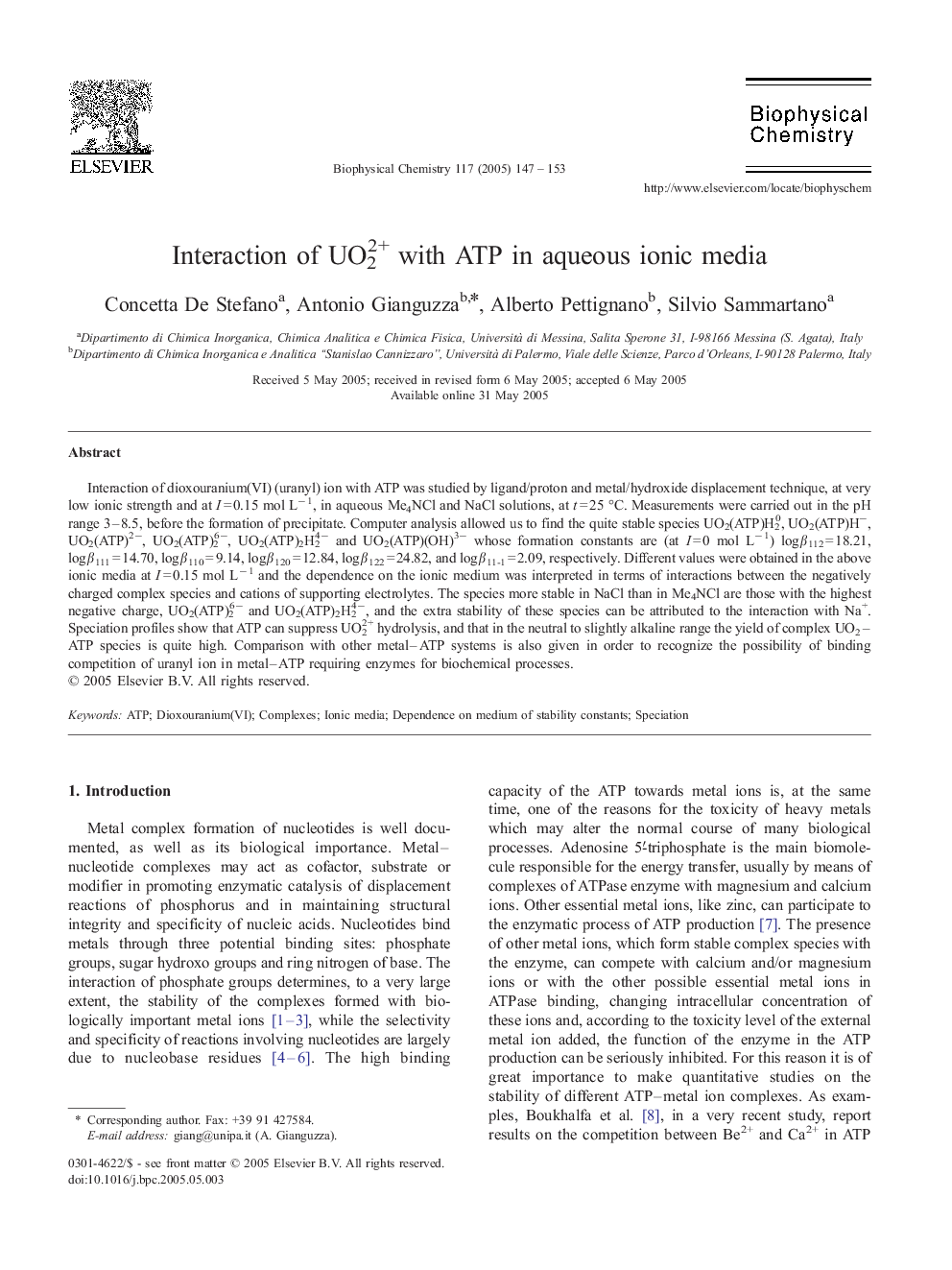| Article ID | Journal | Published Year | Pages | File Type |
|---|---|---|---|---|
| 9573196 | Biophysical Chemistry | 2005 | 7 Pages |
Abstract
Interaction of dioxouranium(VI) (uranyl) ion with ATP was studied by ligand/proton and metal/hydroxide displacement technique, at very low ionic strength and at I = 0.15 mol Lâ 1, in aqueous Me4NCl and NaCl solutions, at t = 25 °C. Measurements were carried out in the pH range 3-8.5, before the formation of precipitate. Computer analysis allowed us to find the quite stable species UO2(ATP)H20, UO2(ATP)Hâ, UO2(ATP)2â, UO2(ATP)26â, UO2(ATP)2H24â and UO2(ATP)(OH)3â whose formation constants are (at I = 0 mol Lâ 1) logβ112 = 18.21, logβ111 = 14.70, logβ110 = 9.14, logβ120 = 12.84, logβ122 = 24.82, and logβ11-1 = 2.09, respectively. Different values were obtained in the above ionic media at I = 0.15 mol Lâ 1 and the dependence on the ionic medium was interpreted in terms of interactions between the negatively charged complex species and cations of supporting electrolytes. The species more stable in NaCl than in Me4NCl are those with the highest negative charge, UO2(ATP)26â and UO2(ATP)2H24â, and the extra stability of these species can be attributed to the interaction with Na+. Speciation profiles show that ATP can suppress UO22+ hydrolysis, and that in the neutral to slightly alkaline range the yield of complex UO2-ATP species is quite high. Comparison with other metal-ATP systems is also given in order to recognize the possibility of binding competition of uranyl ion in metal-ATP requiring enzymes for biochemical processes.
Related Topics
Physical Sciences and Engineering
Chemistry
Physical and Theoretical Chemistry
Authors
Concetta De Stefano, Antonio Gianguzza, Alberto Pettignano, Silvio Sammartano,
